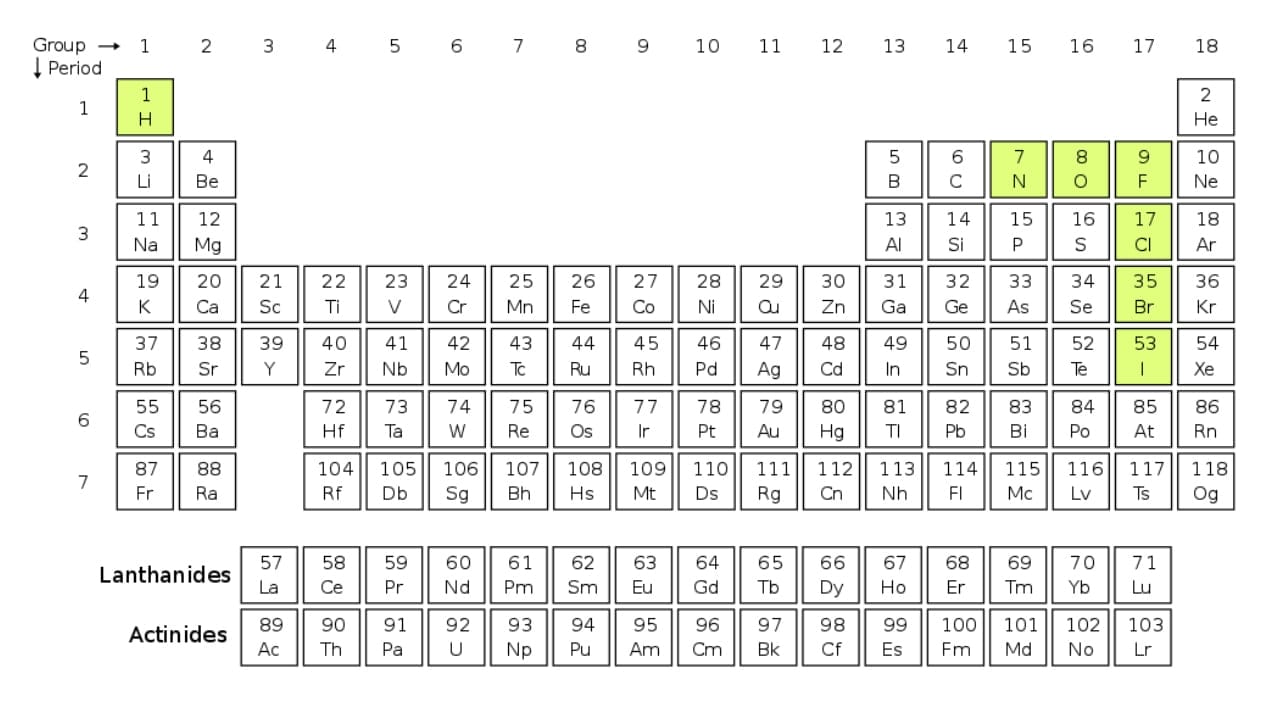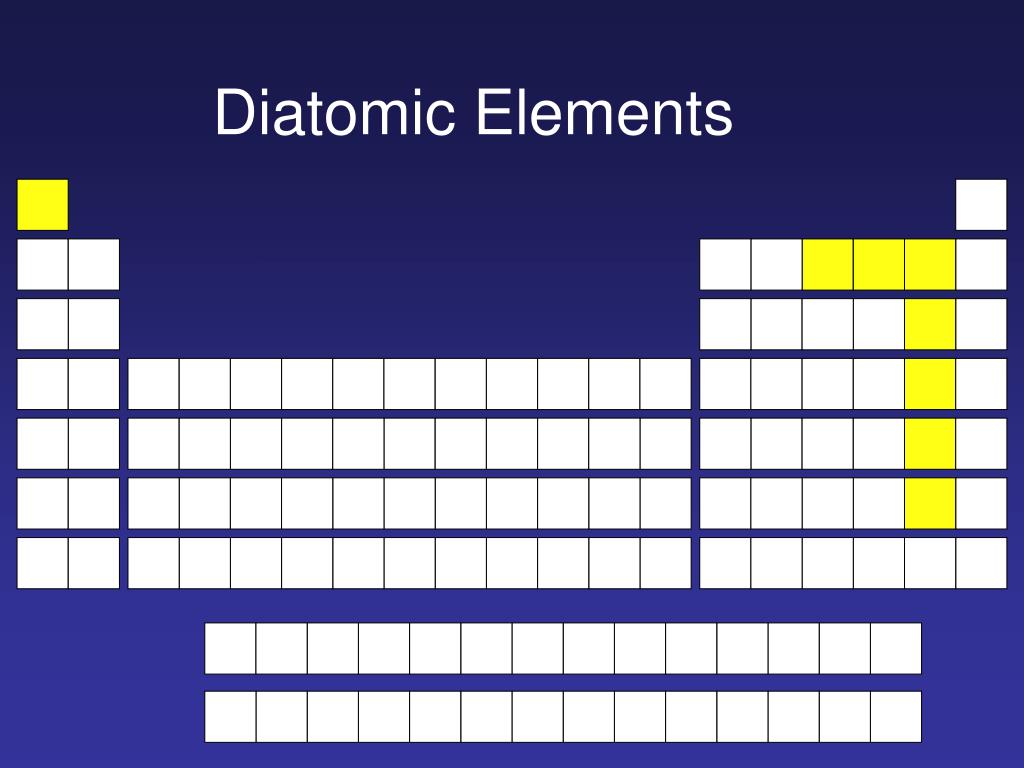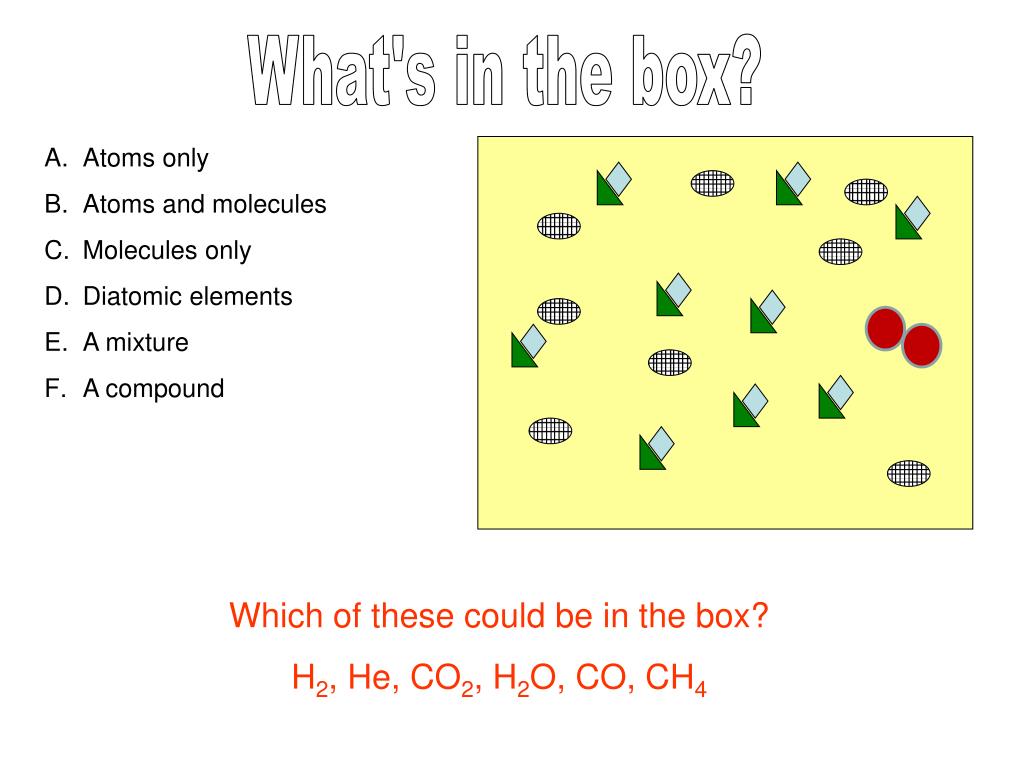

Individual atoms are quite reactive because of their incomplete valence shells and by their closeness to their correspondent noble gases.

So they “prefer” to be attached to another atom of the same element. Well, some elements are more stable combined with atoms of the same type than alone. Something in the way you ask makes me think you are referring to “Diatomic Homonuclear molecules”, a.k.a -non officially- Diatomic Elements.

What Are Diatomic Elementsĭiatomic molecules are normally in their lowest or ground state, which conventionally is also known as the give additional quantum mechanical details about the electronic state. Astatine is another halogen, but its behavior is not known. The diatomic elements are the – ine halogens (fluorine, chlorine, bromine, iodine) and elements with a – gen ending (hydrogen, oxygen, nitrogen). The following 5 element gases are found as diatomic molecules at room temperature and pressure:īromine and iodine commonly exist in liquid form, but also as diatomic gases at slightly higher temperatures, making a total of 7 diatomic elements. There are only 7 diatomic elements in total and only 5 diatomic elements at standard temperature and pressure (STP). It is a form of homonuclear diatomic molecule. Diatomic Elements ListĪ diatomic element is a molecule of an element consisting of two atoms.

These weights were an important prerequisite for the discovery of the periodic law by Dmitri Mendeleev and Lothar Meyer. However, these results were mostly ignored until 1860, partly due to the belief that atoms of one element would have no chemical affinity toward atoms of the same element, and also partly due to apparent exceptions to Avogadro’s law that were not explained until later in terms of dissociating molecules.Īt the 1860 Karlsruhe Congress on atomic weights, Cannizzaro resurrected Avogadro’s ideas and used them to produce a consistent table of atomic weights, which mostly agree with modern values. As a consequence, confusion existed regarding atomic weights and molecular formulas for about half a century.Īs early as 1805, Gay-Lussac and von Humboldt showed that water is formed of two volumes of hydrogen and one volume of oxygen, and by 1811 Amedeo Avogadro had arrived at the correct interpretation of water’s composition, based on what is now called Avogadro’s law and the assumption of diatomic elemental molecules. For example, Dalton assumed water’s formula to be HO, giving the atomic weight of oxygen as eight times that of hydrogen, instead of the modern value of about 16. What Are The Diatomic Elementsĭiatomic elements played an important role in the elucidation of the concepts of element, atom, and molecule in the 19th century, because some of the most common elements, such as hydrogen, oxygen, and nitrogen, occur as diatomic molecules. John Dalton’s original atomic hypothesis assumed that all elements were monatomic and that the atoms in compounds would normally have the simplest atomic ratios with respect to one another. However, some scientists predict tennessine may behave more like a noble gas. This connection is called a chemical bond.Astatine (atomic number 85, symbol At) and tennessine (atomic number 117, symbol Ts) are also in the halogen group and may form diatomic molecules. A cylindrical line connecting the balls represents the connection between the atoms that make this collection of atoms a molecule. An atom is represented by a small ball or sphere, which generally indicates where the nucleus is in the molecule. \) shows two examples of how molecules will be represented in this text.


 0 kommentar(er)
0 kommentar(er)
